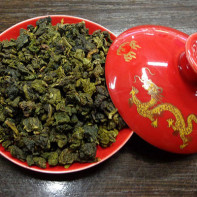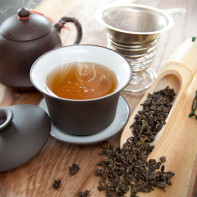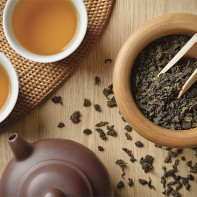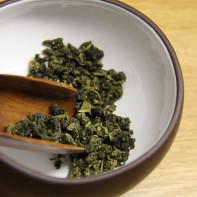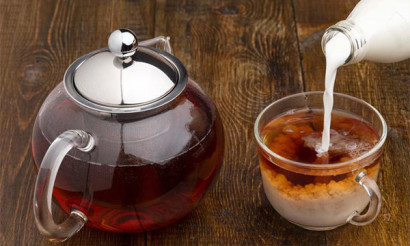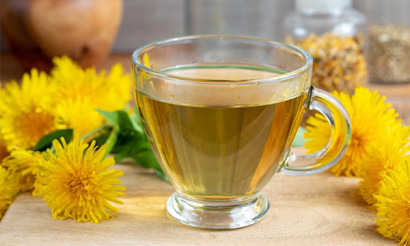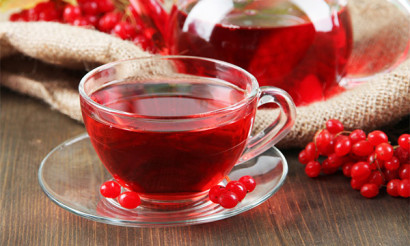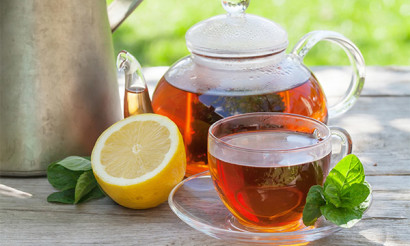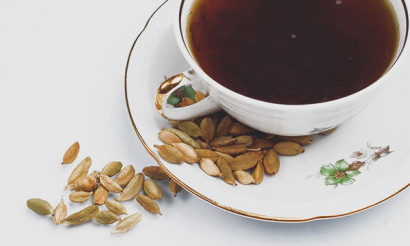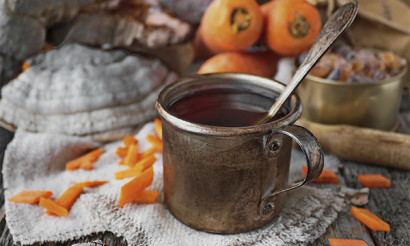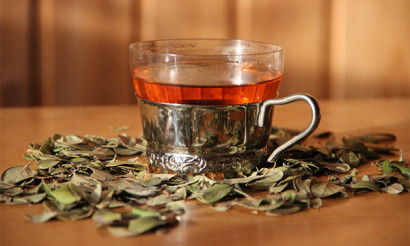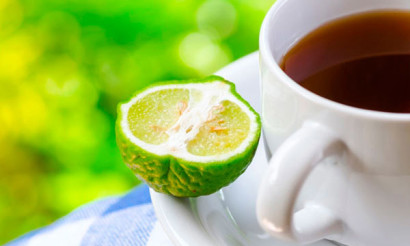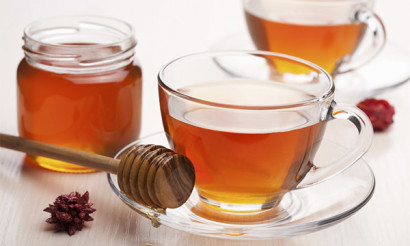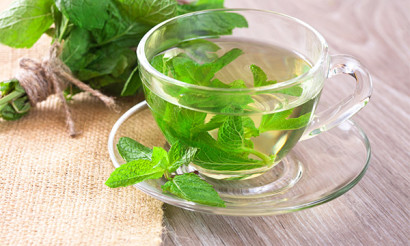Milk oolong: types, beneficial properties and contraindications
Milk oolong seems to many at first exotic and very unusual. Those who try it either become its true fans forever and include it in their diet constantly, or do not perceive it. But such people are few, because milk oolong gives a supply of energy, gives strength, restores activity, improves immunity, strengthens health due to the content of many beneficial substances needed by the body.
- What is milk oolong
- History
- Types of
- Milk oolong and oolong: what's the difference
- Composition and Calorie
- What is the usefulness of milk oolong?
- For Women
- For Men
- Pregnancy
- Breastfeeding
- For children
- When losing weight
- Oolong Tea with Ginseng Benefits
- Cosmetological Usage
- Harm and Contraindications
- How to choose and store
- How to brew milk oolong tea correctly
- How to drink milk oolong tea
- Can I drink it at night?
- Interesting facts about milk oolong
What is the milk oolong?
The difference between oolong and other types of tea is this: for example, when the packaging bears the name "baiye", it means that the top leaves and leaf buds with white flecks were picked from the tea plant for its base, i.e. bai hoa. And for oolong, the picking comes from already mature leaves that are full of juice, and the bushes are older. The harvested leaves are left in the sun for a short time, up to half an hour. During this time, the leaves have time to dry out a little, which is called wilting.
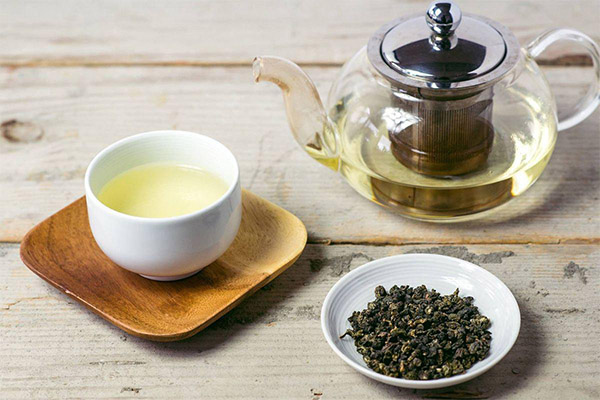
The main thing at this time is to make sure that each leaf is turned over in time. This helps to achieve the destruction of the integrity of the cell membranes. They are then laid in thick layers in the shade and coolness in special large baskets or on trays, mostly bamboo. If it is a large plant, the raw material may be on large tarpaulins. During this time, the sap begins to ferment in them and numerous biochemical processes take place.
It is necessary to knead the leaves, doing so skillfully so as not to break them. The degree of this processing depends on the length of the process and the characteristics of the raw material. One can achieve 20% or 60% fermentation. But the normal rate for oolong is 40 to 50 percent.
History
Milk oolong originated in the Taiwan variety. The variety that brought the beginning of the milky variety was developed not so long ago, in the 1980s of the twentieth century and was born in Taiwan. Exactly "Jin Xuan" variety of tea was the basis thanks to the fact that it had aromatic notes of milk. Exactly these characteristic traits were taken as a basis and the leaves were processed by applying certain temperatures and fermentation.
The new variety did not appear quite usual, it is appropriate to remember the proverb that there would be no happiness if it were not for bad luck. It all started with the Second World War. The Taiwanese island was held captive by the Japanese. They hoped to stay here for a long time and even founded a research institute dedicated to tea. But still they had to leave this fertile place, yet they managed to preserve thousands of hybrid oolongs after them. Thanks to the scientist and breeder of Chinese origin Wu, they did not die and work with them continued. In 1982 they succeeded in creating a new hybrid, the milk bush, which was firstly named "Taiwan Tea No.12", then "27th Son", as its place on the plantation was numbered "2027".
This novelty was something to be proud of because:
- The variety had a very high yield.
- The plant was resistant to the diseases that kill many tea bushes.
- Its leaves were creamy and milky in colour and creamy in flavour.
But it should be noted that this tea variety is not particularly fragrant: milky notes appear weak and irregular in it. This quality can only be appreciated by connoisseurs, and for the mass consumer, flavorings are necessarily added during the production process.
Professor Wu named his offspring Jin Xuan after his mother.
Varieties of
Milk oolong has several varieties. It includes a whole group of weakly fermented oolong or medium fermented oolong, but the twist is always hemispherical. It is called milky because it contains a natural or artificial flavoring with different concentrations, which determines the quality of taste.
Flavorings in this drink can be different, and they give not only a milk flavor, but also caramel, chocolate with milk and many others. Thanks to modern technology, it is possible to easily adjust the saturation of additives and their characteristics.
The base of the tea may not always be of the highest class. Whether it's low-grade oolong with a very low price, or the highest grade, they all have to reveal their flavor qualities during tea drinking.
There are different kinds of milk oolong:
- Jin Xuan has a natural milky flavor.
- Nai Xiang Jin Xuan is different because it needs an additional flavoring, and this process is very long, but has its own positive qualities. The drink becomes fragrant and the flavor notes of milk and cream are very pronounced in it. Some people think that this variety is manually pollinated with sugar cane or sprayed with milk, but it is not true.
Milk oolong and oolong: what's the difference
Milk oolong and oolong are different types of tea trees. Milk oolong is a painstaking work of breeders, it is thanks to them that they achieved that milky unique aroma and exquisite taste. But it should be noted that these are all semi-fermented teas. China has its own classification, where oolong tea occupies an intermediate position when choosing between red and green teas.
Composition and calories
Scientists have counted more than 400 kinds of different nutrients in oolong, without which the normal functioning of human organs and systems is impossible. It contains:
- B vitamins. B1 helps produce hydrochloric acid, participates in carbohydrate metabolism and in the formation of blood cells. B3 is essential for the metabolism of carbohydrates, fats, proteins, helps the nervous system to cope with stress. Vitamin B6 is also essential for the nervous system and DNA synthesis. It is also necessary for the production of hydrochloric acid and the absorption of proteins and fats. Vitamin B12 improves digestion, promotes cell formation and resistance to negative environmental influences.
- Vitamin C is ranked among the most powerful antioxidants. It is able to bind free radicals, blocking their destructive effects on body tissues. Also ascorbic acid helps to increase the activity of other antioxidants, these are primarily selenium and vitamin E, which is restored quickly if vitamin C is present from its oxidized form. But the properties of ascorbic acid are much greater. It regulates blood clotting, lipid levels, forms bone and connective tissue, reduces the effects of allergens, stimulates the production of interferon, which prevents the reproduction of viruses.
- Vitamin D is not found in its finished form, but it is present in milk oolong as a provitamin. Once in the human body, it serves as the starting material from which this vitamin is built. It is the main regulator of phosphorus-calcium metabolism.
- Vitamin E. This vitamin has a great deal of work to do in the human body. First of all, it is an excellent antioxidant that affects intracellular lipids, reducing their oxidation and stopping their destruction, restores the function of endocrine glands, takes part in protein and carbohydrate metabolism, prevents the development of muscle dystrophy. It is also famous as a vitamin of youth, because it prevents aging, prevents wrinkles and makes skin more elastic.
- Vitamin K. Its other name is phylloquinone. It promotes the formation of prothrombin in the liver. This substance is necessary for normal blood clotting, otherwise liver disease can develop, there is bleeding - hemorrhagic diathesis. With the help of phylloquinone muscle function is realized, increases the peristalsis of the stomach and intestines, supports the work of the liver and heart. If this vitamin is deficient, there are frequent ruptures of small blood vessels and bruising of the body surface.
- Magnesium is involved in phosphorus metabolism and regulates blood pressure if it is elevated. The proportions of magnesium and phosphorus are harmoniously combined in milk oolong.
- Manganese must be involved in all metabolic processes because it activates the functions of many enzymes. Its main purpose is to regulate the nervous system, sex glands and the musculoskeletal system. This trace element acts as a prophylactic agent if there is insufficiency of the coronary arteries of the heart, thyroid pathology, disturbed lipid metabolism or carbohydrate metabolism.
- Iodine. To feel the lack of this element in the body is possible almost immediately, because it starts malaise in the thyroid gland. And since many systems are affected, metabolic processes such as protein, fat and carbohydrate are disturbed.
- Iron. Without it, the work of a number of enzymes that are catalysts of redox reactions will not be possible. This element is part of hemoglobin and myoglobin; it is used to transport oxygen, produce energy and support the immune system.
- Calcium. This mineral is the main element of bone tissue. Its function is to participate in the complex mechanisms of blood clotting, to remove from the body salts of heavy metals or radionuclides. It has properties to have anti-allergic effects and to relieve the effects of stressful situations.
- Phosphorus is one of the components of bone tissue. But it has other tasks. It is involved in energy metabolism, in a large number of metabolic reactions, such as the formation of nucleoproteins responsible for cell division and procreation. This element has a very positive effect on libido.
- Selenium. It is often used in medicine to prevent cancer when people work in hazardous chemical industries or with radiation. Selenium has pronounced antioxidant properties, it stimulates the formation of antibodies, which means that the body's defenses are increased. Thanks to selenium the probability of infections and colds is decreased.
- Zinc. This trace element has a direct influence on redox processes and is an important part of many enzymes, especially antioxidant enzymes, which means it helps to prevent free radicals. Zinc also restores normal tissue respiration, is involved in the regeneration of hemoglobin and red blood cells.
- Essential oils have phytoncidal activity, stimulate the body's defenses, have anti-allergic effect, come to the aid of intestinal and bronchial diseases, hypertension and atherosclerosis.
- Tanin. It has a mild biological effect on the body, excellent tonic, strengthens blood vessels, reducing the permeability of their walls. Especially useful for those who have intestinal diseases.
- Flavonoids are necessary for people as antioxidants, antibiotics of plant origin. They remove heavy metal salts and have anti-cancer activity.
What is the usefulness of milk oolong
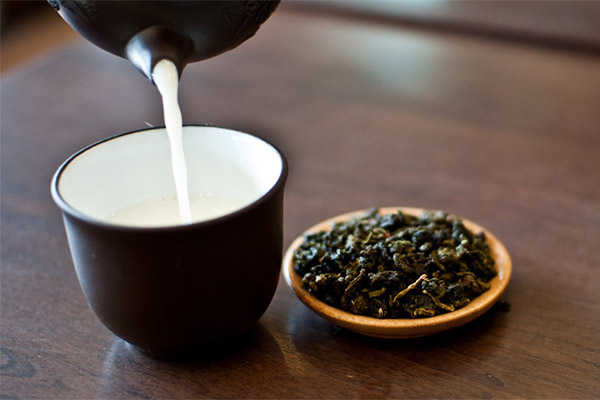
For Women
For women, this kind of tea is useful if you need to relieve painful symptoms associated with the first days of menstruation (due to the high content of calcium). The high percentage of vitamin C increases the possibility of conception. Also during menopause, especially during the first period when a woman loses a lot of bone mass and the production of estrogen (which helps accumulate calcium in bones) decreases considerably, milk oolong helps to maintain health. Thanks to magnesium the negative symptoms of menopause are reduced.
For men
First of all, milk oolong is useful for the stronger sex because it helps the prostate and reproductive organs function properly. In this, a great merit zinc. This element helps if low testosterone levels are detected or if there is a low concentration of sperm cells. This oolong has a lot of selenium, which is also found in the testicular seminal tubules. For especially vigorous men who have an active sex life, the need for selenium should always be higher. And the presence of calcium, vitamins C, D and B12 in the tea contributes to sperm motility, its vitality and improving its quality.
In Pregnancy
Scientists have proven that vitamin C, which is found in milk oolong, is essential during pregnancy because it reduces the risk of miscarriage and complications during childbirth. Due to the presence of calcium in the drink, toxicosis is reduced. Many women during this period are sharply felt iron deficiency and may develop anemia. Therefore, milk oolong will be useful for pregnant women, but first it is necessary to consult a doctor what daily dose of the drink can be taken.
Breastfeeding
When breastfeeding, the presence of useful components will support the immune system and improve the quality of milk. During lactation, it is important to supply the infant with all the necessary substances for normal development, and they are in a complete set contained in milk oolong.
For kids
For children, milk oolong is useful due to the presence of many trace elements and vitamins. There is iodine, which contributes to the normal functioning of the thyroid gland, and it significantly affects the formation of the child's brain, improves the nervous system, which helps during intensive classes at school.
When losing weight.
When losing weight, milk oolong helps to give up fragrant and tempting pastries and candy because it itself has a rich caramel-milk flavor and can suppress appetite. This drink is able to eliminate the feeling of false hunger, restores normal metabolism. It removes fluid from the body, adsorbs excess fat and sugars, also removing them from the body. A successful combination of useful components allows you to achieve the desired effect in the normalization of weight without resorting to diets and starvation. It is enough to stick to your diet.
Useful properties of oolong tea with ginseng
It is believed that the most exquisite is oolong tea with jasmine of high grades. This drink conveys a unique wonderful aroma of petals and is a great warming drink.
This tea is made from Taiwan raw material and is called jade tea because the color of the tea itself is very reminiscent of this stone. The color of the brewed beverage is emerald-golden.
Such tea is very useful because:
- Excellent tonic, especially if a person needs a lot of mental or physical exertion.
- Reduces cholesterol levels.
- Rich in vitamins and trace elements.
- Improves the cardiovascular system.
Cosmetic use
Milk oolong has many components that help maintain healthy and supple skin. For example, it contains a large amount of zinc that prevents skin aging, and without this trace element, the epithelium is not able to renew itself. Vitamin E helps the skin to be more elastic.
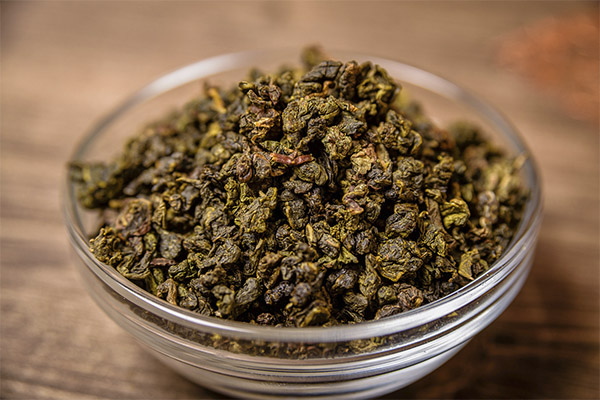
It is enough to brew it correctly, then pour it into ice molds and wipe your face, neck and cleavage in the frozen form every morning and evening. The skin will be smooth and satiny.
To the brewed tea of 3 tablespoons add a few drops of olive oil, 2 tablespoons of freshly squeezed mint juice and half a teaspoon of honey. Stir and apply to face and neck with fingertips. Wash off after 15 minutes. Such a mask is very effective nourishes the skin and makes it glow.
You can revive the hair with milk oolong, especially if the scalp is prone to allergic reactions. Brew a drink, add to it a small amount of soaked rye bread crumbs (this mask is done on dry unwashed hair), soak for 20-30 minutes. Then rinse thoroughly.
You can simply rinse your hair with brewed oolong. They will become silky and shiny, and a few drops of lemon will add brightness to the hair.
Harms and Contraindications
Milk oolong contains a lot of magnesium and it is known to reduce blood pressure, so people with hypotension should not get involved with the drink in large quantities. Overly strong brewed oolong can cause anxiety.
How to Choose and Store
The base of the tea may not always be the highest grade. Moreover, it is mostly inexpensive tea. And the more whole leaves it has, the higher its quality. When buying milk oolong, you should pay attention to such nuances:
- The leaves are twisted, but they should not be particularly different from each other in length.
- The leaves should not be broken, it is always whole leaf tea.
- The color should be the same.
- There are no crumbs or dust in the package.
When brewing milk oolong, you can also tell the quality of the product:
- The leaves are darker around the edges and the veins and middle are green, and they retain their dense structure and color.
- All of its specific flavor qualities must remain.
To preserve its flavorful qualities, tea should preferably be stored in a container made of glass, ceramic, earthenware or porcelain. Tin containers are also ideal. There is one more important condition: the lid should be tightly closed, so that it is dark and dry inside. The sun's rays are detrimental to oolong. Also, find a place to store it where there are no aromatic products. The fact is that oolong intensively absorbs all odors.
Specialists say that this kind of tea can be stored in the freezer, if the temperature does not exceed -20 degrees, but not more than a year.
How to brew Oolong milk tea correctly
A properly brewed beverage has a golden color and its taste is quite mild, with a mild milky and creamy hue. A porcelain teapot is a good idea. But some people who like milk oolong prefer glass teapots, because it's a beautiful sight when the leaves start to unfold.
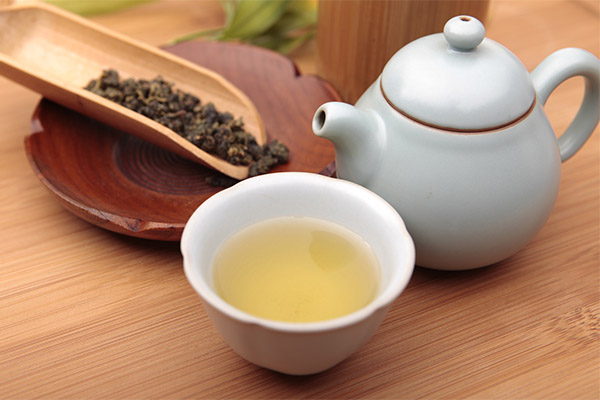
Before steeping, rinse the grounds with hot water so that they are warm. But do not heat the container on the fire, because the surface may overheat, and as a result, the taste of the tea will suffer and there will be a bitterness.
Specialists strongly recommend using only purified water, and the drink should be brewed at a temperature of 80-85 degrees. The best proportions are 1 teaspoon of leaves per 150 ml of water. And it is possible to brew tea more than once.
Depending on the fermentation process, the brewing differs:
- If weak fermentation - no more than three minutes.
- With medium - the water temperature can be higher - up to 90 degrees. The pot can be earthenware, as because of the thicker walls, the leaves will open up as much as possible, giving off their flavor.
- A more complex recipe is made for a tea which has undergone stronger fermentation. Then another kind of tea, cha hai, is added to milk oolong. The two types of tea are infused separately in different containers in equal proportions, and then the infusions are mixed. It is possible to brew this leaf-based drink up to seven times.
It is better to brew the desired strength of tea at once, so as not to dilute it with boiling water. This way the flavor and aroma will be preserved. It is ideal if the brewing water is mountain water. Liquid from the tap can significantly harm the quality of the drink.
How to drink milk oolong
It is better to drink this drink in small sips and feel how it reveals its unique qualities and fills the body with vigor and strength. It is believed that this drink is a holiday drink, and you should not drink it in a hurry and fuss.
Can I drink it at night?
If you brew the tea, choosing too high a concentration, it can cause insomnia, but weakly brewed, on the contrary, will turn the drink into a good sleeping aid.
Interesting facts about milk oolong
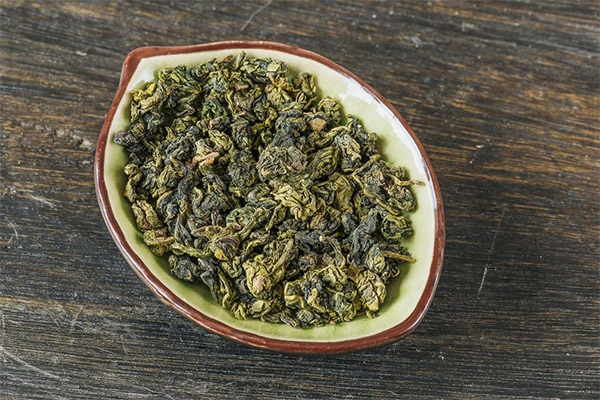
- Since milk oolong belongs to China, and this nation has given the world many lyrical beautiful legends, one of them is devoted to this type of tea. There was an unusually beautiful comet flying through the sky, and our moon fell in love with it. But the comet did not reciprocate and whizzed past, but before it could disappear into the vastness of space, it burned up. The moon was so saddened that it was able to raise a strong, cold wind. It reached Earth, and it became very chilly where the tea plantations were. When the workers went out in the early morning to pick tea leaves, they could smell not only the morning freshness, but also the unusual sweet milky scent that hovered over the area.
- The plantations where this species grows are lost among the Alishan Mountains up to 2,400 meters above sea level.
- The mature, dense leaves and buds of the tea trees are picked only by hand. The best time for picking is spring and fall.
«Important: All information on this site is provided for informational purposes only. for informational purposes only. Consult with your health care professional before applying any recommendations. specialist. Neither the editors nor the authors are liable for any possible harm caused by materials."


